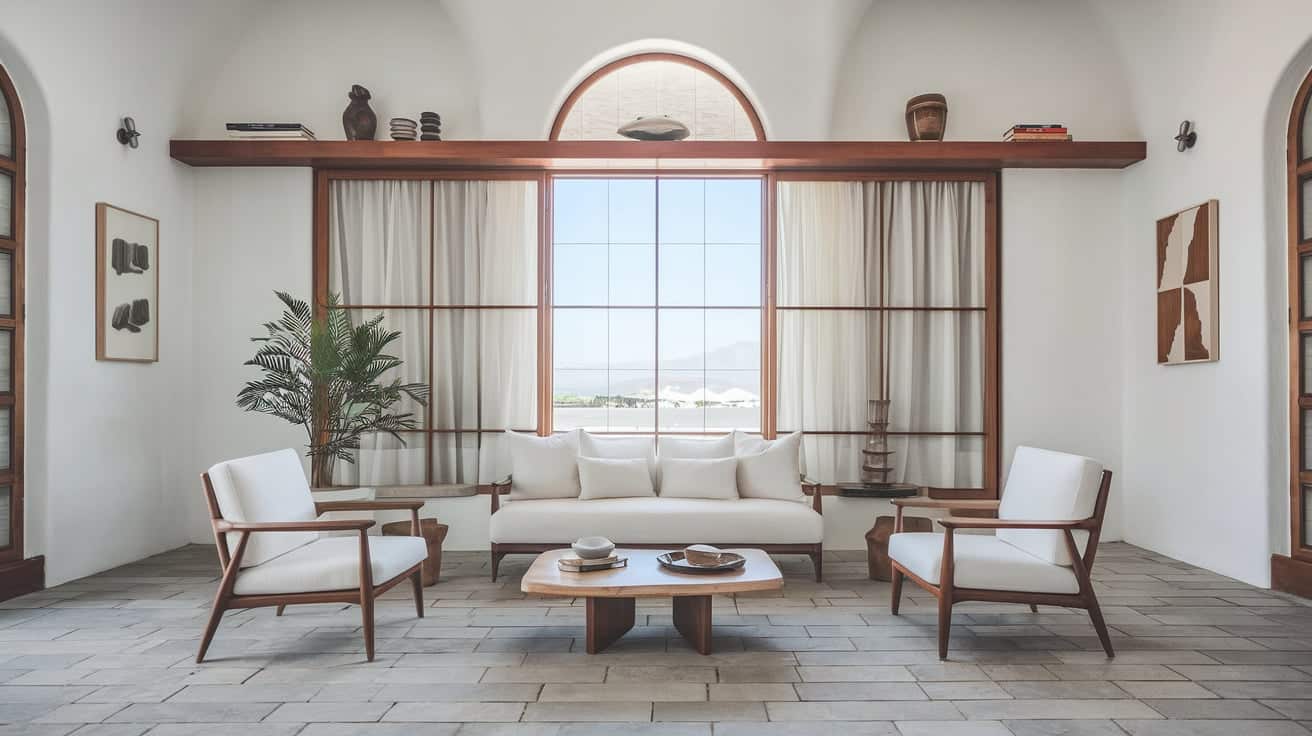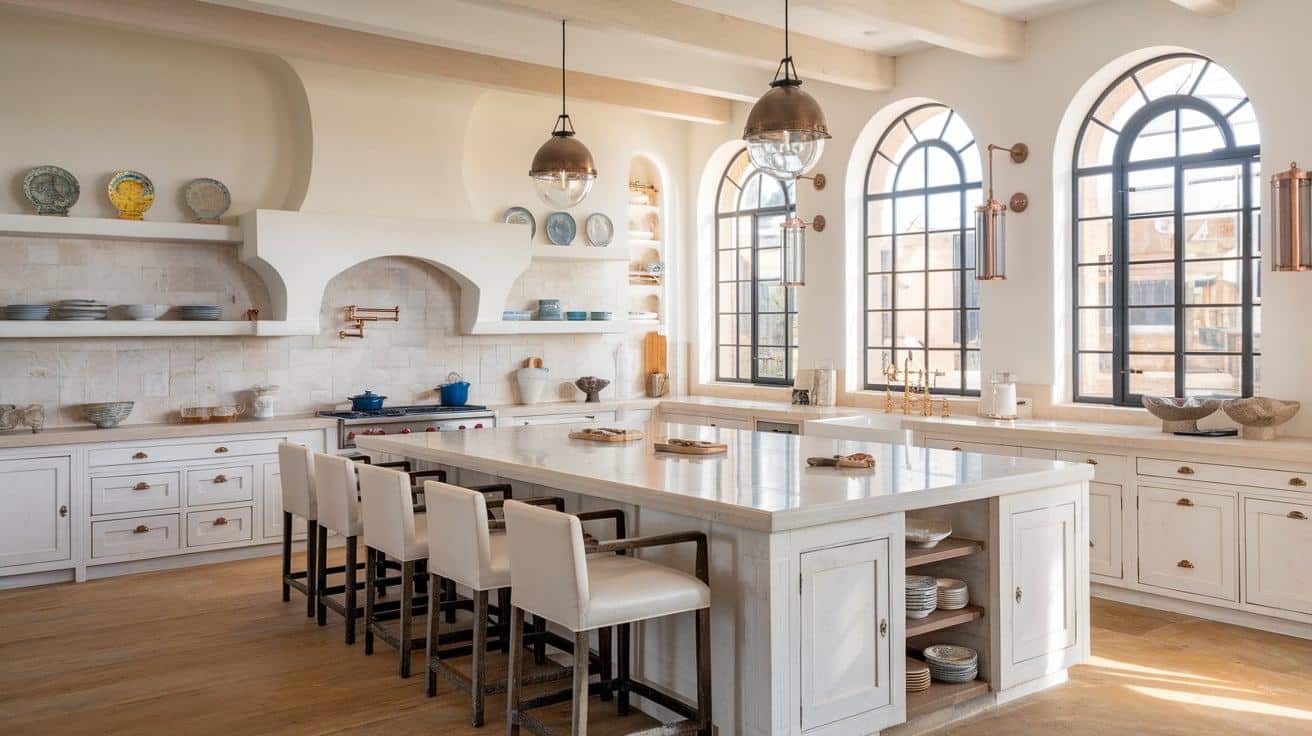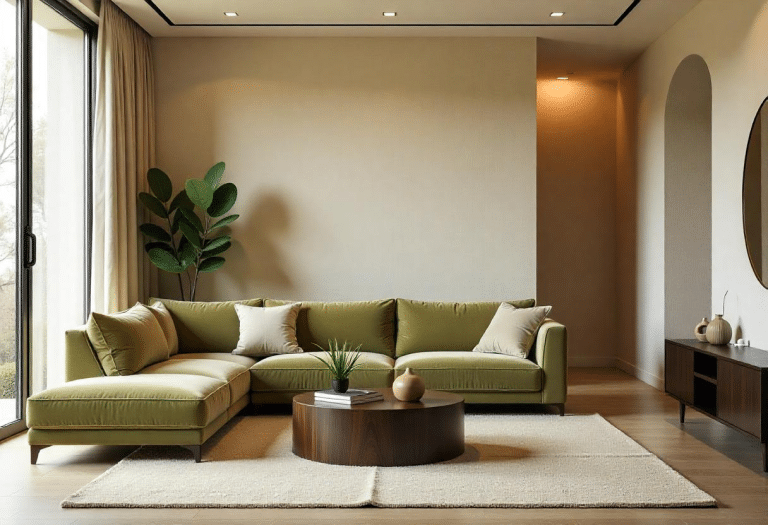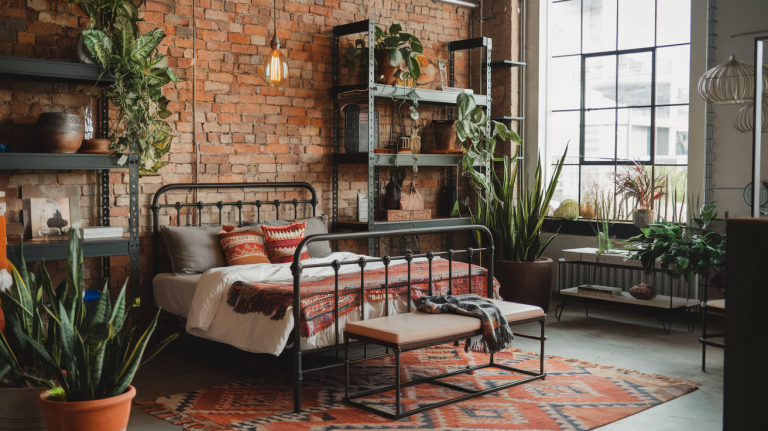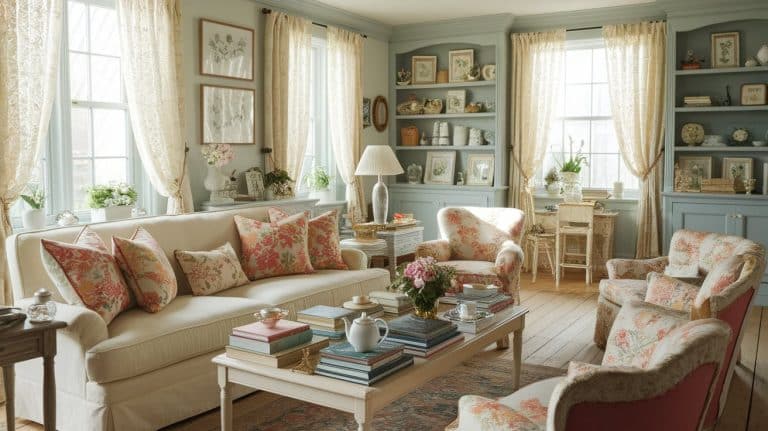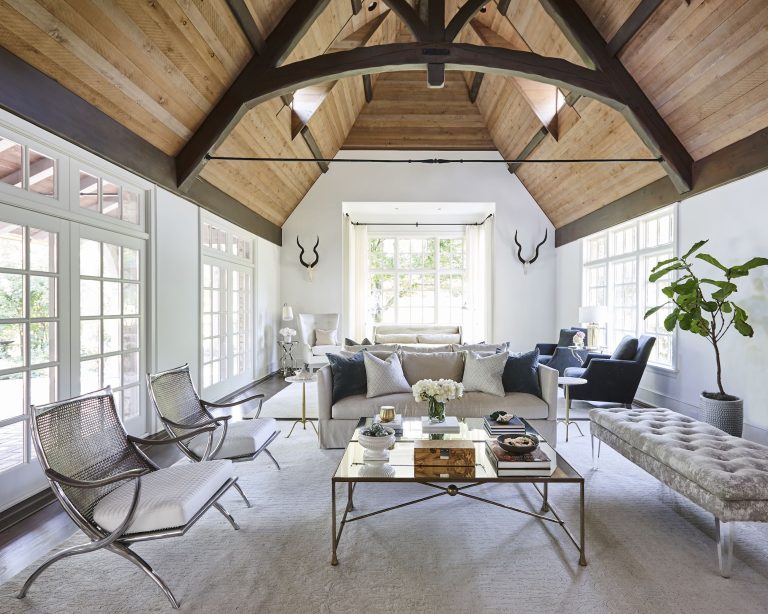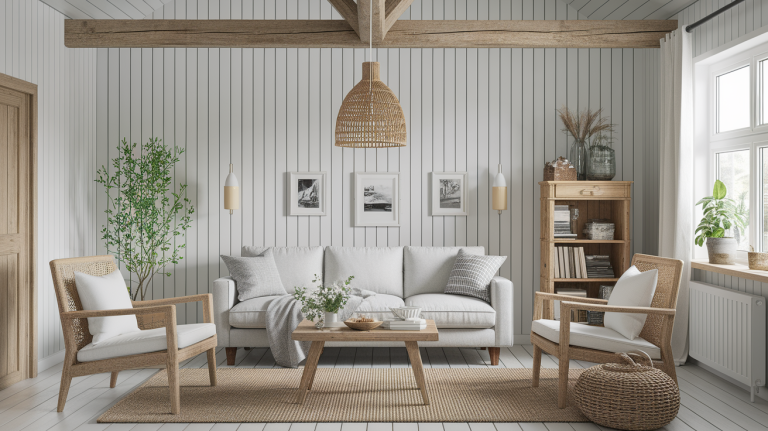Modern Mediterranean: Transforming Your Space
Are you searching for a fresh take on home design but feeling stuck between modern minimalism and traditional warmth?
I’ve noticed that many homeowners struggle to combine contemporary style with timeless Mediterranean elements, often resulting in too stark or overly ornate spaces.
Let me share something exciting: creating a perfect balance that captures Mediterranean charm while maintaining clean, modern lines is possible.
Your home can reflect this coveted style through thoughtful design choices and simple principles.
In this guide, I’ll discuss practical ways to incorporate modern Mediterranean style into your space, from natural materials and neutral palettes to indoor-outdoor living concepts that make every room feel special.
What Is the Modern Mediterranean Style?
The modern Mediterranean style combines the sun-soaked essence of coastal living with current design sensibilities.
This approach strips away excessive ornamentation while preserving the soul of Mediterranean architecture.
Unlike its traditional counterpart, which often features heavy details and bold patterns, the modern interpretation focuses on clean lines and understated beauty.
This style creates spaces that feel both current and timeless. It’s about finding balance – mixing the old with the new, the simple with the textured.
Think of white-washed walls paired with natural stone features or sleek furniture complementing centuries-old architectural details.
Key Features That Define Modern Mediterranean Interiors
1. Neutral and Warm-Toned Color Palettes
The color story begins with whites and creams as the foundation. These light shades create an airy feel while reflecting abundant natural light.
I recommend adding depth through earth tones – soft browns, gentle terracottas, and muted golds. These colors echo the natural materials found in Mediterranean landscapes.
2. Natural Materials
Materials tell the story of modern Mediterranean homes. Stone, particularly limestone and travertine, adds texture and history to walls and floors.
Wood brings warmth, especially when used in ceiling beams or furniture.
Clay and ceramic elements, from floor tiles to decorative pieces, add authentic character while maintaining simplicity.
3. Signature Architectural Elements
Specific architectural features highlight the bones of Mediterranean design. Arched doorways and windows create gentle transitions between spaces.
Courtyards and patios serve as natural extensions of indoor living areas. Smooth-finish plaster walls offer a modern take on traditional stucco.
4. Emphasis on Natural Light
Natural light is crucial in modern Mediterranean spaces. Large windows, often metal-framed, welcome sunlight while adding a contemporary edge.
Glass doors open to outdoor areas, creating fluid transitions between inside and outside living spaces.
What is Neo-Medialist Style?
Neo-Medialist style represents a fresh interpretation of traditional Mediterranean design principles.
This approach maintains core Mediterranean elements while introducing current materials and technology. It’s less about strict adherence to historical patterns and more about capturing the feeling of Mediterranean living in a contemporary context.
In Neo-Medialist homes, steel windows might flank traditional arched doorways, and modern kitchen appliances might seamlessly integrate into spaces with classical proportions.
This approach honors heritage while embracing innovation.
Designing Key Spaces: Where Tradition Meets Modernity
1. The Kitchen – The Home’s Focal Point
In modern Mediterranean homes, the kitchen is more than a cooking space; it’s the heart of daily life. I recommend focusing on clean lines while incorporating natural elements.
Stone countertops paired with white cabinetry create a perfect balance.
Copper or brass fixtures add warmth, and open shelving should be considered to display handmade ceramics.
Could you consider incorporating a large island with comfortable seating?
This will support both casual dining and social gatherings. The key is maintaining functionality while honoring Mediterranean design through thoughtful material choices.
2. Living & Dining Areas Creating Warmth & Comfort
These spaces should feel inviting and lived-in. Start with a neutral base and add layers of texture through natural materials.
I suggest mixing comfortable upholstered pieces with items that show character, such as a vintage wooden coffee table or handcrafted dining chairs.
Arrangement matters here: Create conversation areas that encourage connection and position seating to take advantage of natural light and views.
The dining area benefits from a statement light fixture ideally placed over a substantial table that can host daily meals and gatherings.
3. Outdoor Spaces – An Extension of Indoor Living
Mediterranean living celebrates the connection between the inside and the outside. To this end, create defined outdoor “rooms,” such as a dining area, a lounging space, and maybe a quiet reading nook.
You can use materials that complement your interior while enduring the elements.
Pergolas or canvas awnings can provide shade, and water features can be incorporated for their cooling effect and peaceful sound. Potted plants, especially olive trees and lavender, bring natural Mediterranean elements.
4. Decor & Accessories – The Art of Layering
Layering in Mediterranean design requires a thoughtful approach. Begin with essential pieces and build interest through carefully chosen accessories:
- Textiles: Mix textures with natural fiber rugs, linen curtains, and cotton throws
- Lighting: Combine practical and atmospheric lighting through wall sconces and table lamps
- Art: Select pieces that complement rather than compete with architectural features
- Natural elements: Incorporate stone vessels, wooden bowls, and ceramic pieces
The key is adding elements gradually, ensuring each piece serves a purpose while contributing to the overall atmosphere.
Color & Material Selections for a Timeless Look
Creating a lasting palette requires careful consideration of both colors and materials:
Base Colors
- Whites and creams for walls and large surfaces
- Earth tones for grounding elements
- Soft blues and greens as accent colors
Materials
- Stone for flooring and accent walls
- Wood for beams and furniture
- Metal for fixtures and hardware
- Clay and ceramics for decorative elements
Mix these elements while maintaining balance. The goal is to create depth without overwhelming the space.
Lighting in Mediterranean Design: Creating Warmth & Ambiance
1. Natural light
Natural light takes center stage in Mediterranean homes, with thoughtful artificial lighting playing a supporting role.
Large windows, glass doors, and well-placed skylights welcome sunlight throughout the day, creating shifting patterns and natural warmth.
For evening hours, I recommend a mix of lighting sources:
2. Main Lighting
- Simple chandeliers with clean lines in the living and dining areas
- Wall-mounted sconces that cast gentle shadows
- Recessed lighting for modern subtlety
3. Accent Lighting
- Table lamps with ceramic or metal bases
- Floor lamps near reading nooks
- Under-cabinet lights in kitchens
- Outdoor lanterns for patios and walkways
The key is creating layers of light that can adapt to different times and needs. Consider placing lights at various heights, floor levels, table heights, and ceilings to add depth to your space.
Indirect lighting creates a soft, calming effect in bedrooms and living areas.
4. Kitchen Lighting
Kitchen spaces benefit from practical task lighting and gentle ambient options.
5. Outdoor Lighting
For outdoor areas, subtle lighting extends the usability of patios and gardens during evening hours.
After Sunset, Simple Path Lights, Wall-Mounted Fixtures, and Strategically Placed Lanterns Maintain the Connection Between Indoor and Outdoor Spaces.
The Overall Goal Is to Create an Atmosphere that Feels Natural and Inviting.
You can focus on fixtures that complement your architecture without removing them from key design elements.
Conclusion
Creating a fresh home that speaks to modern sensibilities and Mediterranean heritage isn’t about following strict rules.
Understanding how each element, from soft white walls to natural stone textures, communicates your unique story.
This guide explored how the modern Mediterranean style balances clean lines with time-tested design principles.
I shared insights into crafting spaces that feel current yet connected to centuries of architectural wisdom.
Remember, your home should reflect your life and style while honoring Mediterranean design’s enduring appeal.
Whether you’re planning a full renovation or making small changes, focus on quality materials, natural light, and meaningful details.
These elements create spaces that remain beautiful and livable through changing times.

